Do you know the top three reasons why consumers recommend their favorite OTT service over another?
- Content variety,
- Ease of content discovery,
- Originals Content.
OTT viewers today are spoilt for choice. All OTT players are competing for consumers’ attention, time, and money. Customer churn is one big problem for OTT players whereas customer acquisition is becoming more expensive and challenging as markets become more populated. In this overcrowded market, how are successful OTT players keeping their customer’s wants, needs, and repeat favorites? Content Acquisition and Recommendation at the core. Let’s understand this step by step…
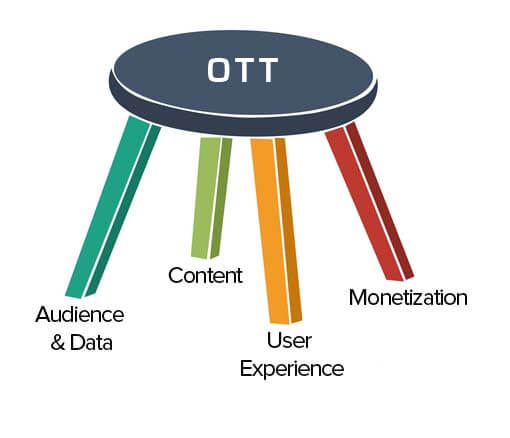
Let’s first start at defining the pillars of any OTT business:
1) Content:
Content is crowned king. The Internet has opened up many floodgates for viewers to choose from, and with so much content available online (variety and volume), viewers are watching whichever right content is catching their attention. Almost every OTT service has some relevant content for each user, all that matters is how are they able to catch-hold the users’ attention at the right moment. A trusted brand with high awareness is highly dependent on what content and OTT service is providing.
2) Audience and Data:
Capabilities to collect the user behavioural characteristics, preferences, interests along with mood, psychology, and emotion-based data. Data is at the helm of the ship, which decides the direction of the business by providing insights at the individual user level.
3) User Experience:
Ease of content discovery, frictionless and engaging user experience with great storytelling captures the users’ attention.
4) Monetization:
With all the above-mentioned things in place, market differentiation and profitability of an OTT service come with its monetization strategy. In today’s crowded market, an average OTT user cant afford to subscribe to all the OTT services at the same time. So, the right combination of the subscription price and other means of monetization is going to define the long-term success of an OTT service.
Understanding the 4 key pillars of an OTT service, data and analytics is the key lever for creating the content, brand, user experience, and vital enabler of market differentiation and profitability. Before we see how can we leverage the data and create a stellar OTT service, let’s first see how to set the right data-direction of the organisation.
Let’s look at the maturity level of OTT organisations:
1) Nascent & Reporting-Informed: At this level, OTT data is collected from its own sources (1st party data) and start supporting decisions based on it. This is the foundation for all next steps as 1st party data should be complete, valid, and trustable for any insights & algorithms to be gathered around it. Most of the time, OTT companies compare their data with external data so as to get the maximum out of available data. As they are learning how to use the data and make decisions, they use basic reporting of data.
2) Insights-centered: At this level, organizations enrich their own data with external data at the user level. Business owners/ decision-makers have access to the data and read insights. Data is also made available to the right teams internally, and ensure what the data actually means. Many OTT organizations are also making efforts to set up selected machine learning use cases.
3) Data-Augmented: At this level, OTT organizations create a fully mature & contextualized party database that is able to correlate data at different contexts. This is where they shift their focus from the audience as a group to individual users and predict their behavior. The behavioral characteristics of each user provide much better insights to the decision-makers to decide the next steps of the organization. Machine learning and automation are industrialized for control of critical processes, such as customer development platform (CDP) powering customer lifecycle management (CLM) at each customer level. Mostly successful OTT & streaming companies are lying at this level e.g. Netflix, Spotify.
4) Data-powered: These organizations have imbibed data in their culture and each and every decision is data-driven. Data is the main business and it becomes the key strategic asset, a monetizable resource & center of business model. Data & machine learning are used at all levels of the company to streamline operations, automate decisions and enable efficient scaling. To make larger decisions, data & machine learning are used to complement human insight for the best combination. Google, Facebook, Amazon are examples of respected data-powered companies.
The real OTT narrative is how you analyze the data and how you use the insights gained to deliver personalization. It’s also about enriching the audience data that influence their subconscious viewing choices.
For an OTT to be data-augmented or data-powered i.e. gaining granular insights into real-time across live and VOD services to improve customer experience, let’s understand the OTT audience movement and what technologies are helping to analyze audience behavior, viewer preferences and pre-empt their future content choices.
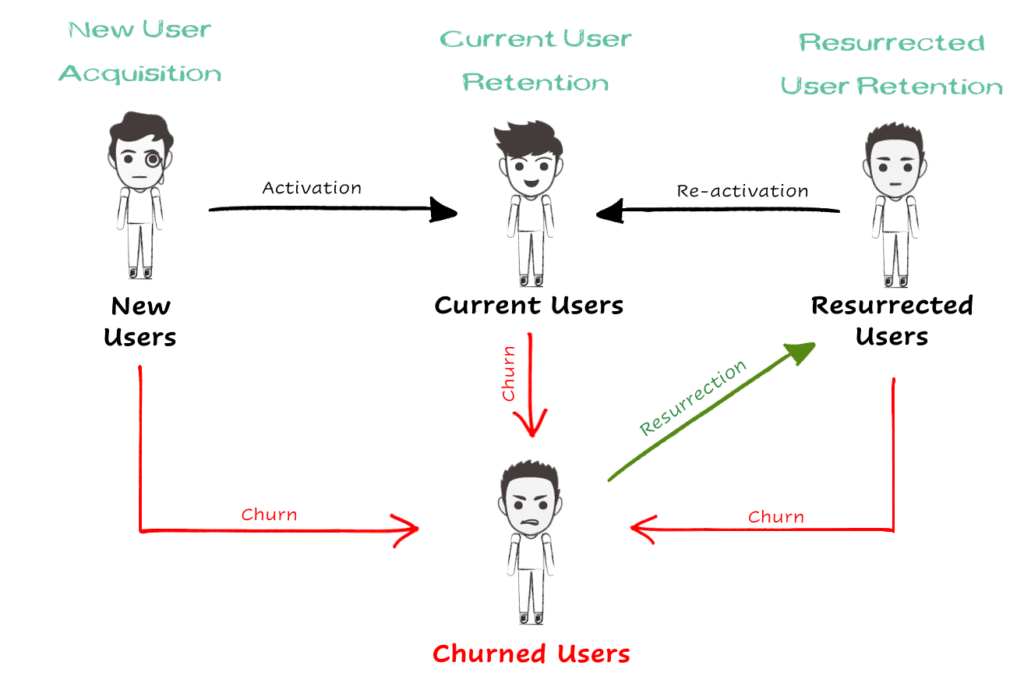
What are the business objectives of OTT:
- Customer Growth (user acquisition)
- Customer Retention (customer retention)
Put simply, user acquisition and retention are like the two wings of a bird – if either one is missing, then flight becomes impossible. User acquisition grows your customer base and retention grows customer lifetime value. The customer lifecycle management (CLM) process establishes different stages of the customer journey and assigns metrics to each stage. Whereas the customer development process (CDP) looks at the growth and nurture of OTT customers from acquisition to retention and increases the company’s profitability. In above diagram shows different phases that customers go through during their journey inside OTT, from being visitors to premium customers to loyalists. To reduce the churn rate (i.e. customers stopped watching content) and increase the customers’ retention, the Content recommendation and personalization engine analyses the customers’ content consumption (behavior, interests, etc) and contextual information (mood, emotions, social identity, etc) and catch-hold the customers’ attention.
Devising Content Strategy: The Cognitive Workflow
Content strategy is the ongoing process of transforming business objectives and goals into a plan that uses content as a primary means of achieving those goals. In the OTT world, the key objective of content strategy is to gain consumers’
- Attention
- Time
- Money
The central part of content strategy is – useful and usable content. This is where OTT platforms need to address content at each user level, rather than aggregated audience/segment/cohort level, so as to reach the required level of personalization and targetability. For this to happen, organizations should include as much data as possible, from internal and external (data enrichment), and through optimization about user levels. This is the secret to Netflix’s success in the OTT world – it leveraged viewers’ data about their wants, needs, and repeat favorites to compete with traditional content. For example – Netflix launched its first original series, House of Cards, released full seasons all at once. Netflix extended the idea of “binge-watching” and transformed it into something more intuitive. This is how “metaphors” work (read more about “metaphors” here). Netflix created a new and different way for consumers to experience content.
Algorithmic Road to Content Recommendation & Personalization – 3 Steps:
Step 1 – Develop your customers
Understand your customers 360 degrees having access to their complete data i.e. OTT big data (internal) + Thick data (Enrichment data).
- OTT Big data (massive & internal) – This data is user consumption behavior, interests, technical data, habits, content discovery patterns and preferences of array of user expressions that provides the richness of insights at your fingertips. Although this data gives us a good direction on customers’ content taste flavors but this data is not enough to run meaningful analysis. It wouldn’t tell us what we needed to do – to be better in longer term.
- Thick data (Enrichment) – This data is customer’s contextual information, which is ever-changing and always evolving. Customers’ factors like subconscious influence, emotions/mood at the time of content consumption, sentiments, cultural, social and psychological contexts. Layering these datasets onto Customer development platform will help OTT platform to uncover content themes that truly resonate with viewers.
The combination of OTT big data and thick data is like mixing art and science. Customers’ OTT data (content consumption) is a pure-play science, whereas choosing the right set of contextual information and applying it to customers’ behavioral-led understanding is an art. We need to have a robust & agile infrastructure for using and analyzing such a level of data to better understand viewer preferences and pre-empt their future content choices. This is where I always suggest investing in cloud-based customer development platforms (CDP) that provide agility and flexibility on a real-time basis. For example, Netflix invested heavily in building a top-class, mutualized infrastructure, enabling an even-based, distributed, microservice architecture. This allows data to deliver the best customer experience, update financials, support operations smoothly. Such a granular level of data capture enables them to harness data and discover deep, actionable insight into viewer needs.
Step 2 – Understand what customers really need (using Affinity Valuation)
Affinity Valuation = f (content library metadata x potential content acquisitions)
Customer needs (not wants) is a combination of OTT consumption behavior + array of user’s contextual preferences (affinity to other types of content, sentiments & virality, travelability, content discovery patterns, etc). Affinity valuation will tell us what customers need is – a strong liking for or attraction to someone or something they had much in common and felt a close affinity for. This is how affinity works – at the subconscious level. Customers sometimes try to discover something, but what customer really needs is something else. Affinity valuation is a function of customers’ existing content library metadata & potential content acquisitions.
Step 3 – Gauge the Content Demand with Recommendation Metrics
Metrics here are quantifiable values to gauge the content demand of customers. The customer affinity assessment formula gives us the value that we need to define and benchmark against each type of content. The quantifiable values help us understand the demand of each customer as per the growth and retention goals of the business. This mathematical model will be an input to the Content recommendation and personalization engine, and based on these real-time values, the right type of content will be recommended to the customers, ensuring much better customer retention and engagement rate.
In Essence
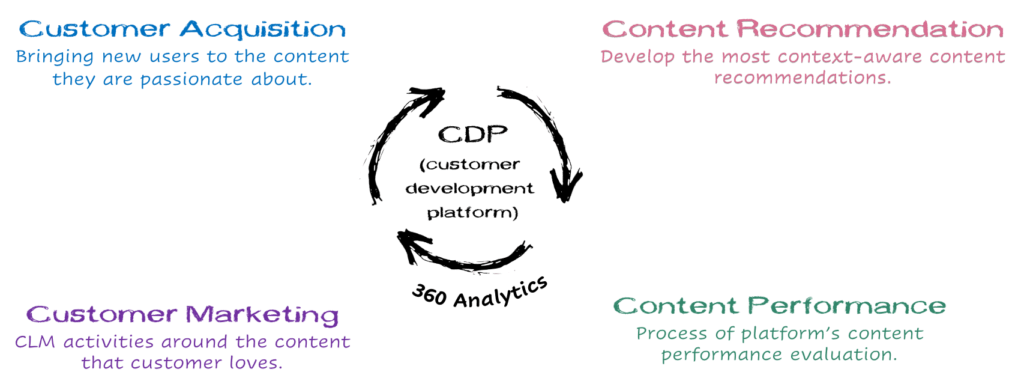
Having the right content strategy work best with having the right technology in place. For example, a cloud-based customer development platform not only helps to develop the customers from their consumption, interests, and intent point of view but also defines the right context and intent for advertiser technologies (DSP, networks, etc). CDP is the platform built with a first-party perspective and helps us identify in real-time:
1) Identify churn likelihood before it happens,
2) Increase retention and customer engagement,
3) Gauge Content Demand.
Content Monetization vs Audience Attention
Before we can optimize content monetization, we need to first understand how to quantify audience attention. This demand measurement system should be capable to capture audience demand expressions across platforms (e.g. binge-watching is a strong indicator of one of the demand expressions). The quantifiable audience attention needs to be leveraged, thereafter, for the content acquisition decision-making process.
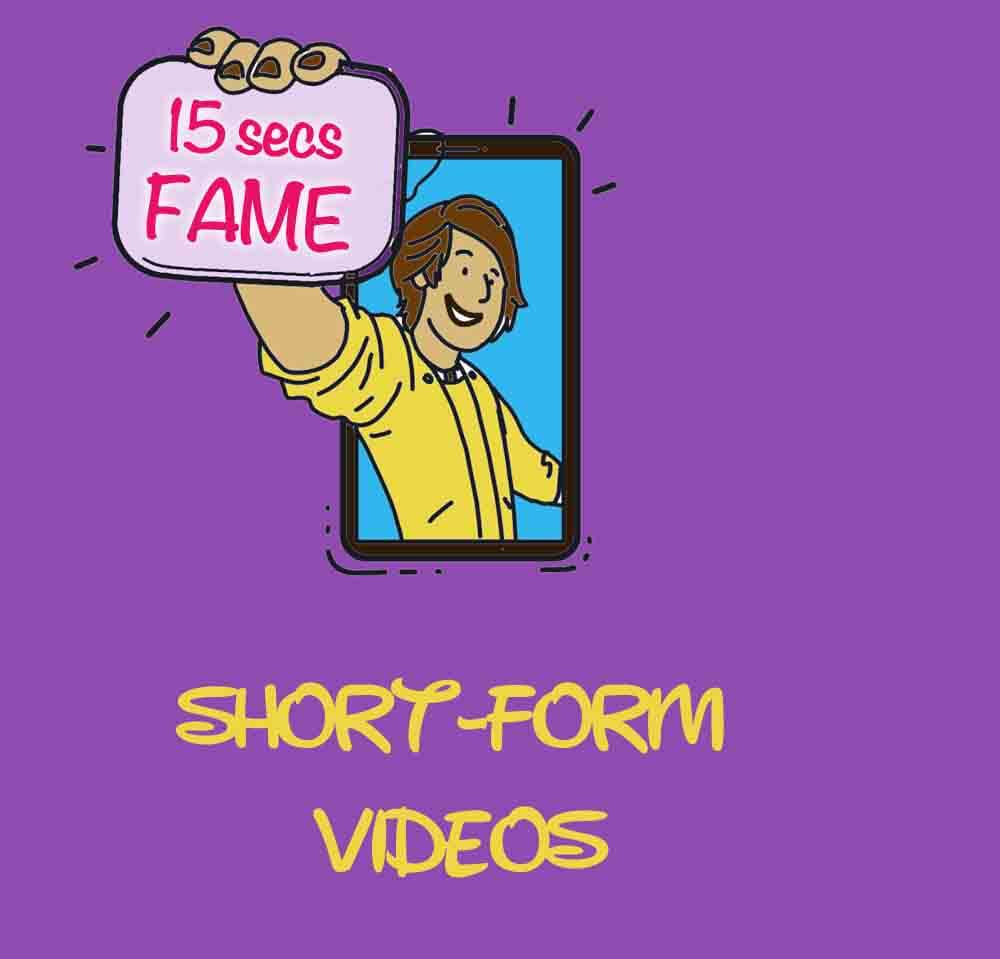
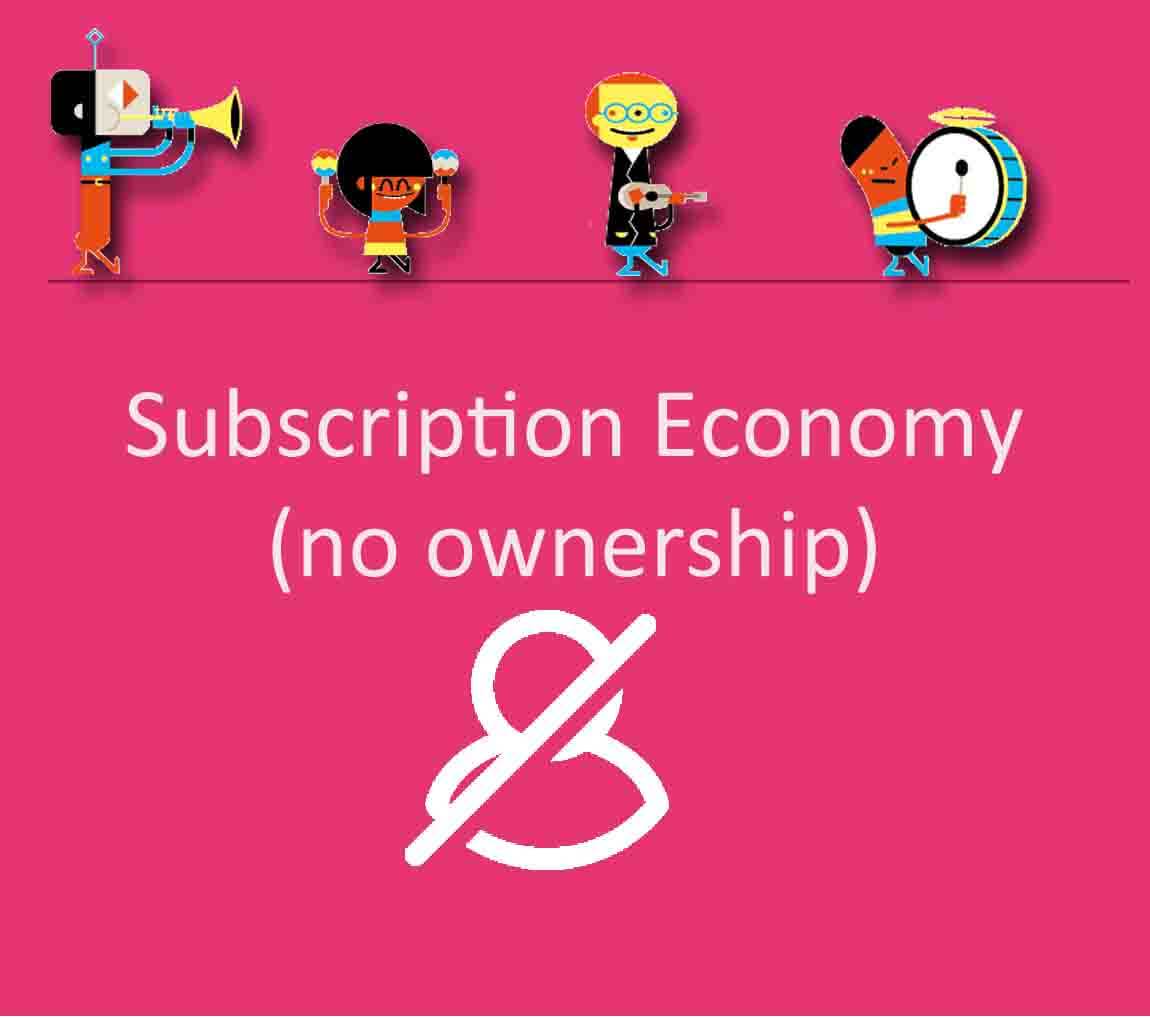
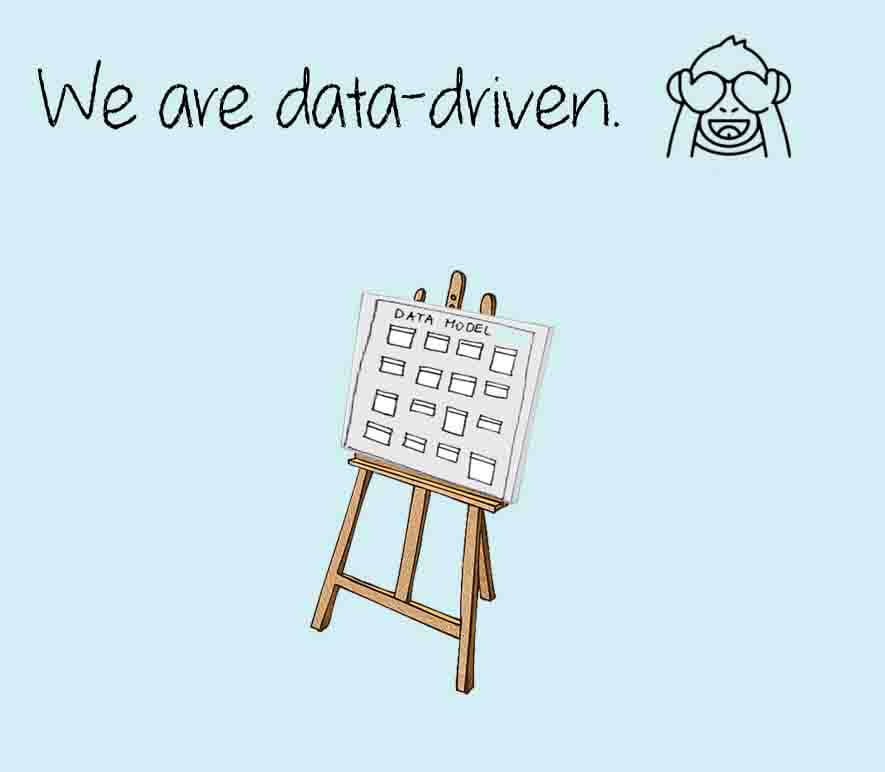
 Swipe for more stories
Swipe for more stories
Comments